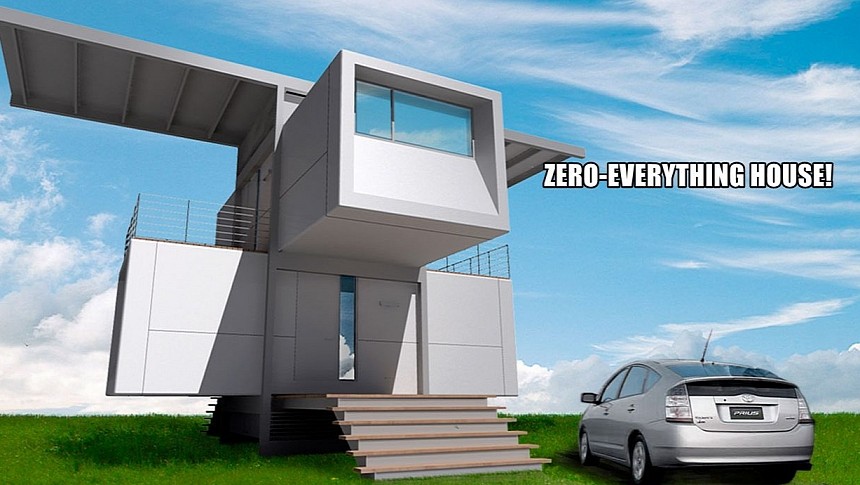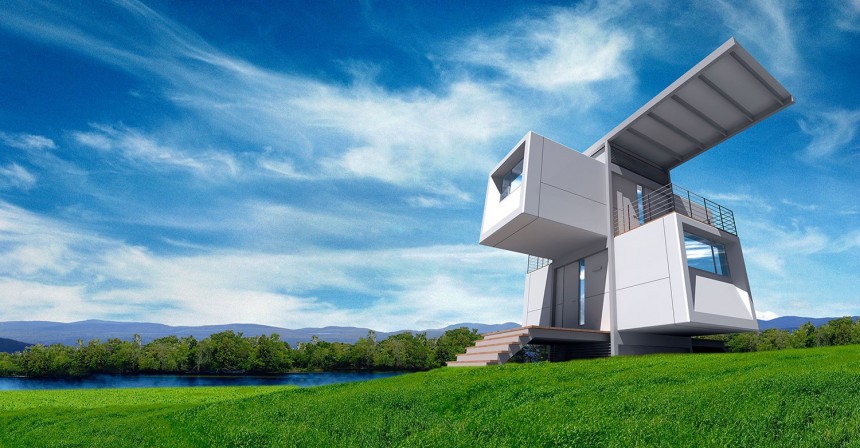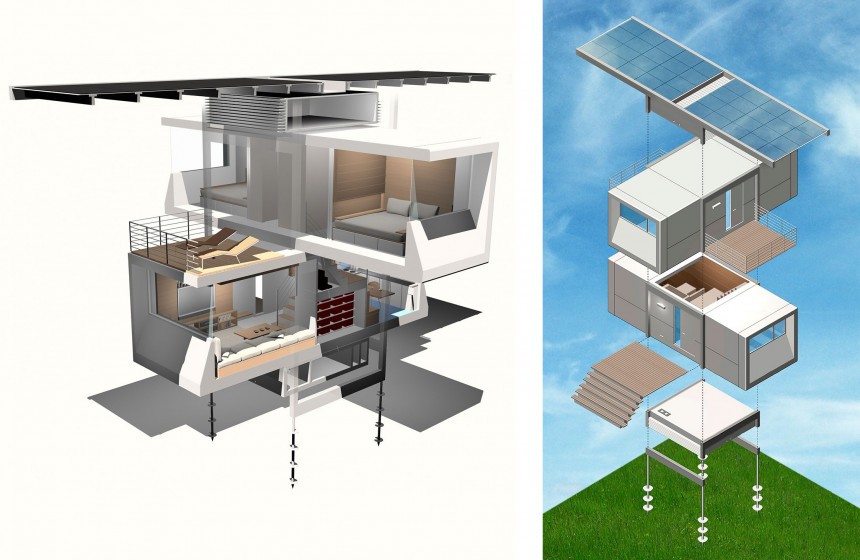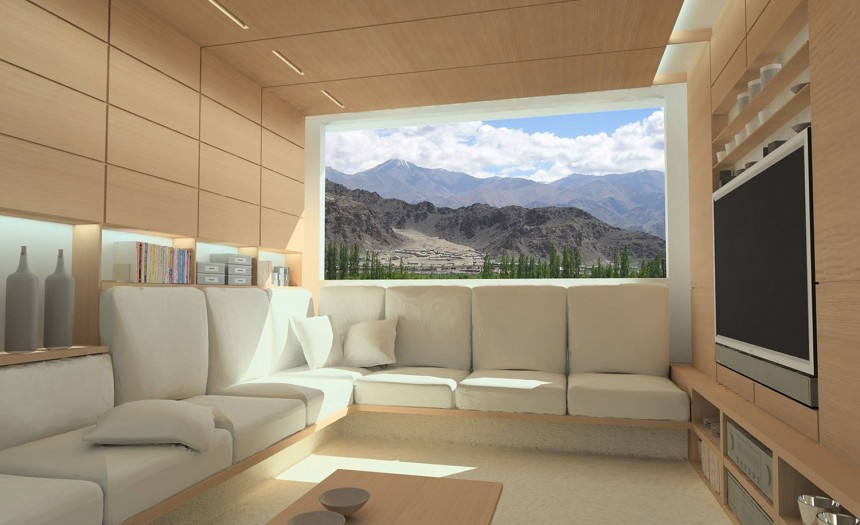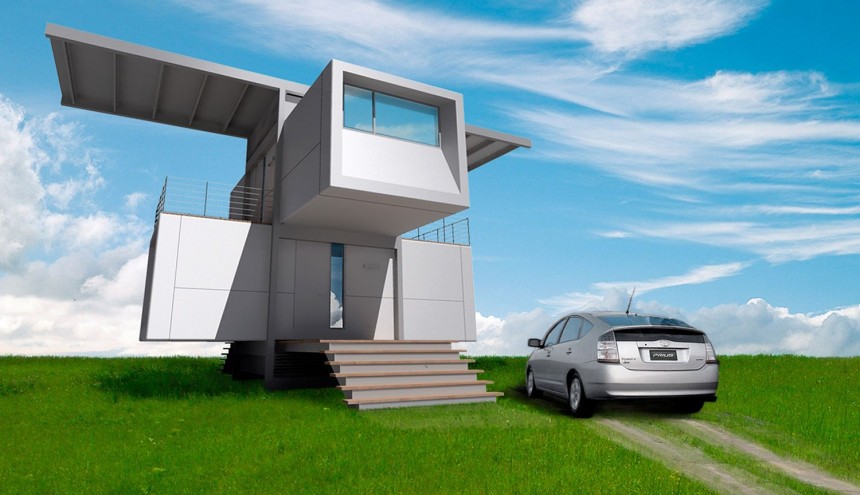Most people still dream of the house of tomorrow in terms of white picket fences and large spaces, especially indoors. But when architect Scott Specht dreams of his perfect home, he'd rather it be modular, mobile, sustainable, and self-sufficient.
Even against the current barrage of sustainable alternative housing solutions, zeroHouse stands out, which makes the fact that it's an old design even more impressive.
Indeed, zeroHouse is not a recent design prompted by the worsening climate crisis, the rising costs of living, and the ever-booming trend for mobile houses. It was unveiled as a concept in 2007 and went through a stage of intense media attention as plans were being ironed out to bring the first completed unit to market within a year.
zeroHouse is the brainchild of architect Scott Specht at a time when sustainability and self-sufficiency weren't even pressing concerns. He worked on it for a very long time as a side project and published it because he wanted some feedback. It brought unexpected media attention and, with help from the DuPont Registry and the Wall Street Journal, a campaign to bring it to market.
Plans eventually fell through, and the zeroHouse never materialized into a real home. But the merits of the project are such that it still gets attention even after all these years, especially in the current context when it's become clear that lightweight, mobile, and sustainable homes are a must.
So, what exactly is it that makes zeroHouse so special? The answer is "everything."
As its name hints, zeroHouse is a house with zero impact on the environment. It runs exclusively on solar, makes its own water, and discards its own waste while also being suitable for all terrains, resistant to very high winds, and guaranteed to last a lifetime. If that's not a dream home, we don't know what is.
The structure is two shipping container-like prefabricated modules, each within legal limits to be transported onto flatbed trailers. Stacked on top of each other, they result in a living area of just 650 square feet (60.3 square meters), divided into livable areas that allow a family of four a comfortable life. The layout includes a kitchen and dining room, a living room, two bedrooms, a bathroom, and two elevated platforms that double as shaded patios.
Using stackable modules allows for easy assembly of the home within a single day and, more importantly, easy transport, should relocation be necessary. zeroHouse sits on four anchor points, which means that it can be set up on the most unlikely terrains as well, including 35-degree slopes or in 10 feet (3 meters) of water.
The exterior is steel, bounded and powder-coated so as to become maintenance-free and ultra resistant. The roof is covered in solar cells, including on the overhangs, which allow the house to run entirely off the grid. Specht replaced water pumps with gravity-fed systems and used insulation to reduce reliance on HVAC, thus further reducing the requirements of the house in terms of electricity.
zeroHouse is rendered completely autonomous by the ability to collect rainwater and filter it for use by the residents, and the ability to turn waste into compost.
A cistern able to hold up to 22,000 gallons (83,279 liters) of water sits on the roof for rainwater collection. Gray water is reused after filtration, while black water goes into a tank underneath, where it's turned into compost. The tank itself would require emptying only two times a year for waste that can't be composted.
Specht estimated that zeroHouse would be able to withstand winds of up to 140 mph (225 kph) thanks to flexible attachments to the frame that would enable deflection and movement without damage. The house would sway in the wind is another way of putting it. In case damage would come to any of the individual panels making up the structure, it could be repaired or changed without any major disruption to the rest of the home.
Since being able to make its own electricity and water wouldn't be enough without a way to monitor consumption, the architect also imagined this futuristic home as a smart one. Specht called it the Brain of the zeroHouse: a web-based system that would gather readings from various sensors around the house, painting an accurate picture of available resources and a prognosis for refreshing supplies.
Also here, he included a self-regulating hibernate mode, where the house would run minimal functions to save resources. zeroHouse would be able to take itself off the grid and then go one step farther: it would limit consumption if the situation called for it. Such a home would come in very handy in a post-apocalyptic scenario, that much is certain!
When the project became an unexpected viral story in 2007, and Specht was entertaining the idea of building a showcase unit of zeroHouse within a year, the MRSP of such a home was set at approximately $350,000.
That probably explains why the project came to a halt shortly after that, despite the architect's promise that prices would fall once production revved up when zeroHouse would become "the Prius of prefab." Or maybe the comparison wasn't the best.
Indeed, zeroHouse is not a recent design prompted by the worsening climate crisis, the rising costs of living, and the ever-booming trend for mobile houses. It was unveiled as a concept in 2007 and went through a stage of intense media attention as plans were being ironed out to bring the first completed unit to market within a year.
zeroHouse is the brainchild of architect Scott Specht at a time when sustainability and self-sufficiency weren't even pressing concerns. He worked on it for a very long time as a side project and published it because he wanted some feedback. It brought unexpected media attention and, with help from the DuPont Registry and the Wall Street Journal, a campaign to bring it to market.
So, what exactly is it that makes zeroHouse so special? The answer is "everything."
As its name hints, zeroHouse is a house with zero impact on the environment. It runs exclusively on solar, makes its own water, and discards its own waste while also being suitable for all terrains, resistant to very high winds, and guaranteed to last a lifetime. If that's not a dream home, we don't know what is.
Using stackable modules allows for easy assembly of the home within a single day and, more importantly, easy transport, should relocation be necessary. zeroHouse sits on four anchor points, which means that it can be set up on the most unlikely terrains as well, including 35-degree slopes or in 10 feet (3 meters) of water.
The exterior is steel, bounded and powder-coated so as to become maintenance-free and ultra resistant. The roof is covered in solar cells, including on the overhangs, which allow the house to run entirely off the grid. Specht replaced water pumps with gravity-fed systems and used insulation to reduce reliance on HVAC, thus further reducing the requirements of the house in terms of electricity.
A cistern able to hold up to 22,000 gallons (83,279 liters) of water sits on the roof for rainwater collection. Gray water is reused after filtration, while black water goes into a tank underneath, where it's turned into compost. The tank itself would require emptying only two times a year for waste that can't be composted.
Specht estimated that zeroHouse would be able to withstand winds of up to 140 mph (225 kph) thanks to flexible attachments to the frame that would enable deflection and movement without damage. The house would sway in the wind is another way of putting it. In case damage would come to any of the individual panels making up the structure, it could be repaired or changed without any major disruption to the rest of the home.
Since being able to make its own electricity and water wouldn't be enough without a way to monitor consumption, the architect also imagined this futuristic home as a smart one. Specht called it the Brain of the zeroHouse: a web-based system that would gather readings from various sensors around the house, painting an accurate picture of available resources and a prognosis for refreshing supplies.
When the project became an unexpected viral story in 2007, and Specht was entertaining the idea of building a showcase unit of zeroHouse within a year, the MRSP of such a home was set at approximately $350,000.
That probably explains why the project came to a halt shortly after that, despite the architect's promise that prices would fall once production revved up when zeroHouse would become "the Prius of prefab." Or maybe the comparison wasn't the best.
